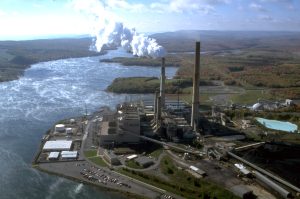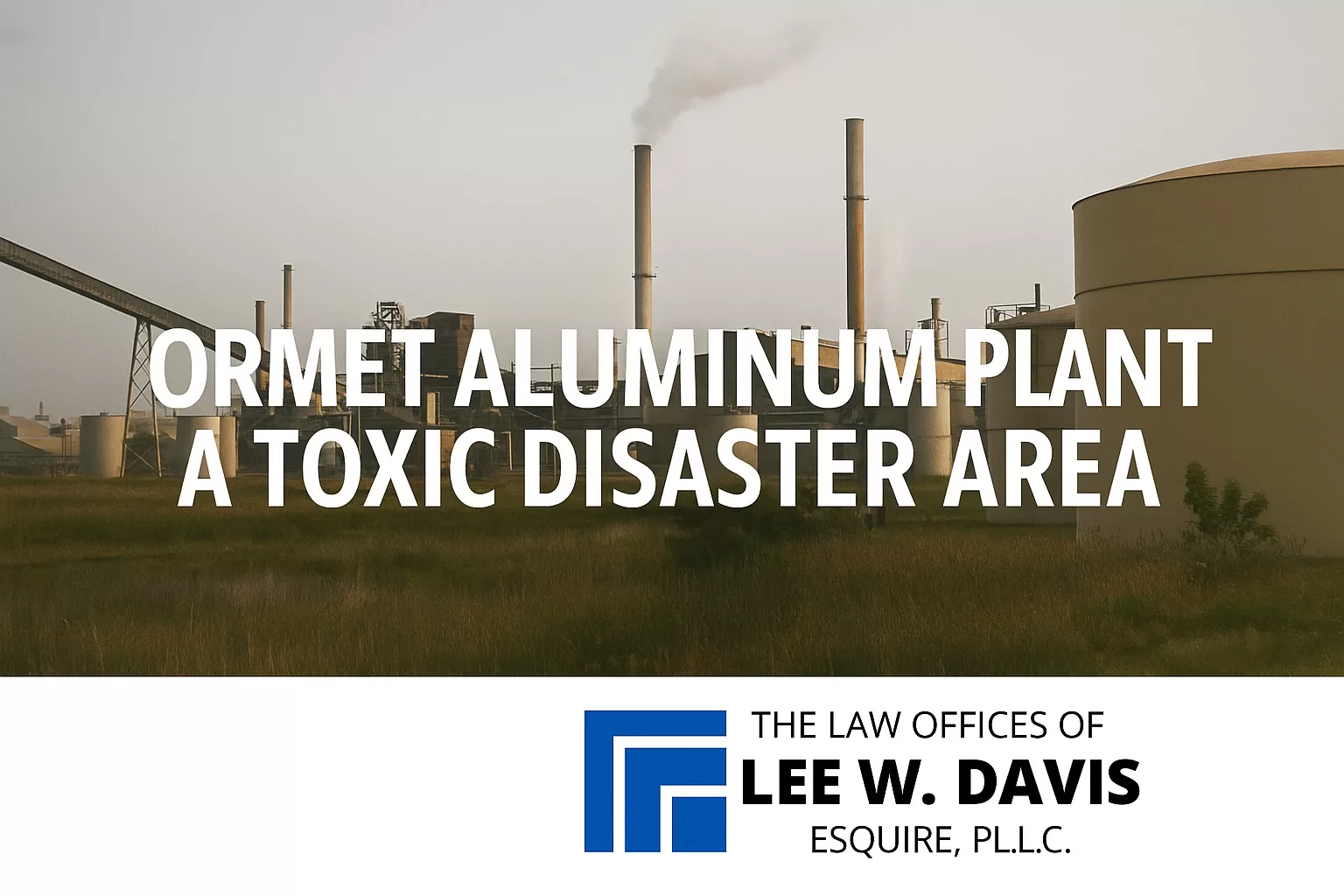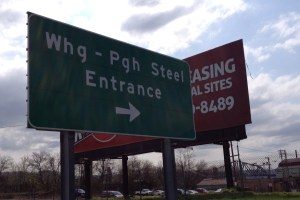Situated on an artificial lake of the same name, the Mount Storm Power Station is one of many coal-fired power stations in the state of West Virginia. This one is located near the town of Bismarck, just along West Virginia Route 93, a largely rural, mountainous area consisting of many residents who have worked for the gigantic power station, where the first unit was commissioned in 1965 with additional units going on line in 1966 and 1973.

Dominion Resources operates the Mount Storm Power Station, and it’s their largest plant, generating in excess of 1,600 megawatts of electricity.
The accompanying lake serves as a cooling pond for the power plant but it also functions as a recreation area for those who live in or visit this area in the rugged Allegheny Mountains. The warm temperatures in the lake make it ideal for swimming and diving, some say, though others suggest concern due to its proximity to the coal-fired plant.
Mount Storm Power Station a Torrent of Asbestos Exposure
In actuality, there’s been plenty of concern about the Mount Storm Power Station over the years. Like all coal-fired stations, Mount Storm produces particulates known as fly ash, which circulate through the air around the plant.
The ash has always been a worry though Dominion has worked harder in the last few decades to reduce the amount of ash and sulfur dioxide that makes its way out of the plant’s boilers.
However, the hazard that wasn’t addressed for the first few decades of the plant’s existence was exposure to asbestos. Indeed, the employees of Mount Storm Power Station faced a much more ominous foe than fly ash.
They were consistently exposed to products made from dangerous asbestos and no one ever told them their health was at stake if they didn’t protect themselves from this toxic mineral.
Tradesmen who may have encountered asbestos products at Mount Storm include:
• Pipefitters
• Insulators
• Electricians
• Welders
• Machinists
• Technicians
• And many others
Asbestos materials may have included:
• Insulation
• Gaskets
• Rope
• Packing material
• Asbestos clothing like aprons, gloves, booties, and even masks
Asbestos exposure was nearly unavoidable for those who worked at Mount Storm Power Station prior to about 1980, and even though there were warnings about asbestos issued as early as the 1930s, often by doctors who monitored the health of plant and factory workers, the practice of using the mineral continued until rules were passed in the late 1970s. As a result, generations of workers would eventually be diagnosed with asbestos-related illnesses, including asbestosis and the much more deadly mesothelioma.
Today, those who worked at Mount Storm Power Station throughout the 1970s are now being diagnosed with asbestos-caused cancer, which can lay dormant in the body for as much as 50 years. These individuals are being struck with the illness during the prime of their life, when they were set to enjoy a leisurely retirement with family and friends. Instead, they are fighting to simply hang on.
Former Mount Storm Power Station employees who are now sick with mesothelioma should know that they have a right to compensation for their suffering. Hiring a local attorney who has had experience with previous Mount Storm-related suits is your best bet for a successful case. Take the time to schedule an appointment with someone who knows the particulars of Mount Storm’s history of asbestos use and you’ll find that your odds of a successful outcome will be largely in your favor.


 Decades ago, when industries arrived in a particular U.S. town, the people of that town rejoiced. They looked forward to the jobs those industries would bring and the prosperity their families would enjoy when steady, full-time employment came into the picture. Throughout the generations, industries of many kinds promised a better life for those they employed.
Decades ago, when industries arrived in a particular U.S. town, the people of that town rejoiced. They looked forward to the jobs those industries would bring and the prosperity their families would enjoy when steady, full-time employment came into the picture. Throughout the generations, industries of many kinds promised a better life for those they employed. Open a newspaper or browse through the latest news on Yahoo or any other internet search engine and you’re likely to dig up at least a few current stories about asbestos negligence cases in the United States. Sadly, most of the time, the stories involve a negligent employer/owner/executive and an unsuspecting employee who now has to face life with the threat of asbestos disease hanging over his/her head.
Open a newspaper or browse through the latest news on Yahoo or any other internet search engine and you’re likely to dig up at least a few current stories about asbestos negligence cases in the United States. Sadly, most of the time, the stories involve a negligent employer/owner/executive and an unsuspecting employee who now has to face life with the threat of asbestos disease hanging over his/her head.